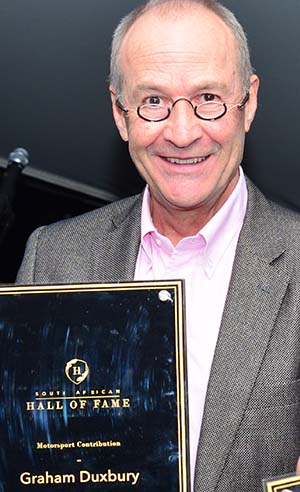As Formula One heads towards another new era in 2026, many believe the cars will evolve into technological marvels. Proposed new advances, such as active aero to reduce drag when downforce is not needed, and automatic car-to-car proximity sensors to prevent crashes, support this hypothesis.
 By Graham Duxbury
By Graham Duxbury
It’s suggested that F1 will move inexorably to the forefront of technology, where its influence will impact everything from road cars and smart cities to consumer electronics and medical technology.
As we look over the horizon today, what did the key players of 20 years ago believe would be the future of F1?
Legendary team owner Ken Tyrrell could not foresee how F1 might cope with a ban on cigarette advertising. “There is just no-one else out there with that amount of money available,” he is reported as saying.
Ken has been proven wrong. According to Stefano Domenicali, the CEO of the Formula One Group, there has never been such a great influx of new sponsor money coming into the sport as today. “Pretty much every F1 team you speak to, they’re almost turning sponsors away now,” he says.
Almost 20 years ago the great Stirling Moss believed F1 to be “completely smothered” by its governing body, the FIA. “This is a shame, a terrible tragedy,” he said.
What would he make of the FIA today? It has a fractured relationship with the teams which often decry the organisation for its lack of consistency in decision-making and criticise its president, Mohammed ben Sulayem, for a failure of leadership.
This was particularly evident after the ’22 Italian GP ended behind a safety car which generated disapproval from Christian Horner (Red Bull), Mattia Binotto (Ferrari) and Haas’s Guenther Steiner who remarked that the GP “wasn’t handled how it should’ve been”.
Back in 2000, Frank Williams, founder of the Williams team, was asked about F1’s future: “I would like to see cars developing around 1000hp with precious little in the way of grip. Yes, we had that sort of power at the height of the turbo era, but that was capped in the interests of safety,” he said.
Well, Sir Frank’s wishes have to a large extent come true. Today’s hybrid power plants deliver around 1000 hp, with a percentage of the power (160hp) coming from electrical energy.
For 2026, the electrical energy produced will increase to around 470hp, while the internal combustion engine will be power-limited as the maximum fuel allowed for the race will drop from the current 110kg to just 70kg. However, there should still be around 1000hp on call.
With regard to levels of grip, this is another issue. Even though drivers often bemoan a “total lack of grip”, Haas driver Kevin Magnussen believes the current generation of race tyres produce enough grip to mask many handling deficiencies caused by a poor chassis design or setup.
Two decades ago, world champion Jacques Villeneuve said that he would vote to get rid of some of the electronic aids on F1 cars, such as power steering. “These cars are meant to be physical to drive and driver aids have no place in F1.”
It must be remembered that Villeneuve uttered these worlds long after driver aids such as traction control, ABS brakes and active electronic suspension were outlawed for 1994. In the intervening years the FIA has done much to control driver aids such as double-axis steering (DAS), double-bite-point clutch systems, as well as pre-set, lap-distance-dependent brake-bias adjustment systems, among many others. Power steering, however, remains.
Looking ahead to 2026, one can expect F1 to take great strides towards carbon neutrality. Sustainable fuels, limits on tyre use and other measures designed to appease the green-lobby will be mandated.
There will be a tightening cost-cap with which to contend as teams are required to do more with less. Stricter rules regarding standardised components will be introduced, together with regulations aimed at reducing the weight and bulk of the cars.
Hopefully this will make 2026 F1 cars more attractive and raceable – as they were back in 2004 and ’05. This, according to many fans, was a “golden era of F1” when tyres could be pushed to the limit all race long and the cars always appeared to be on a knife edge.
